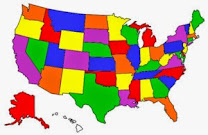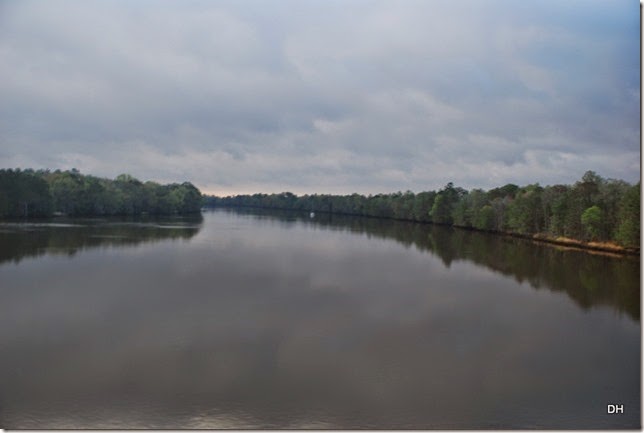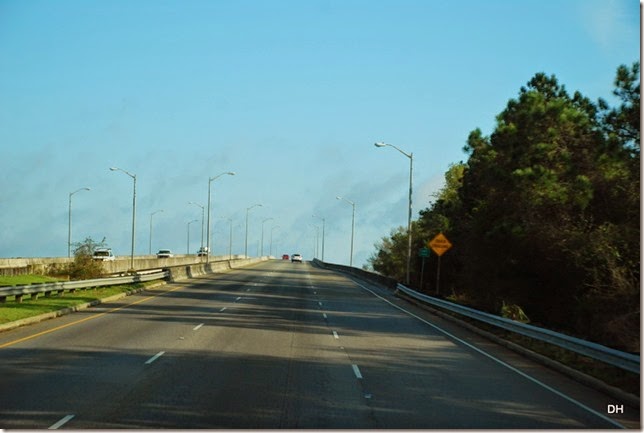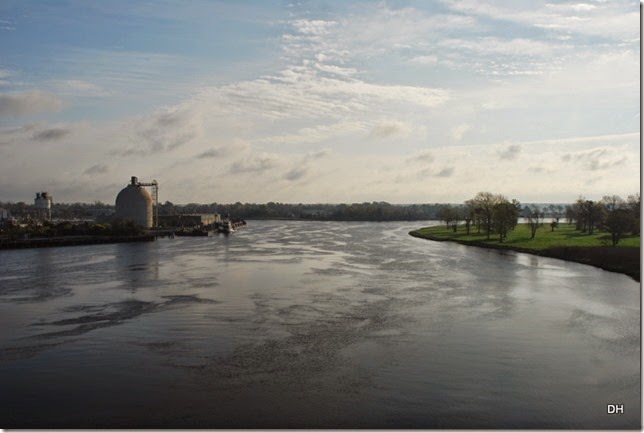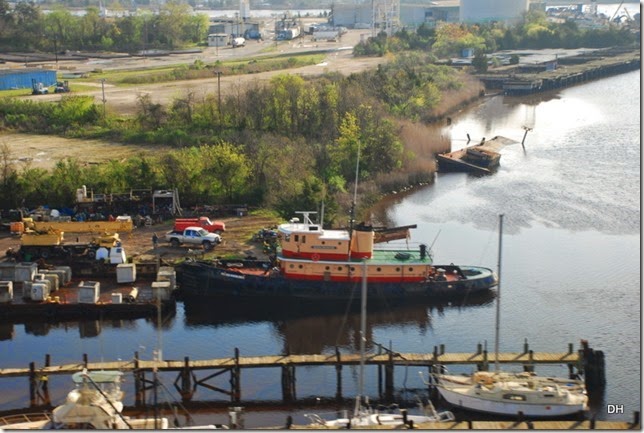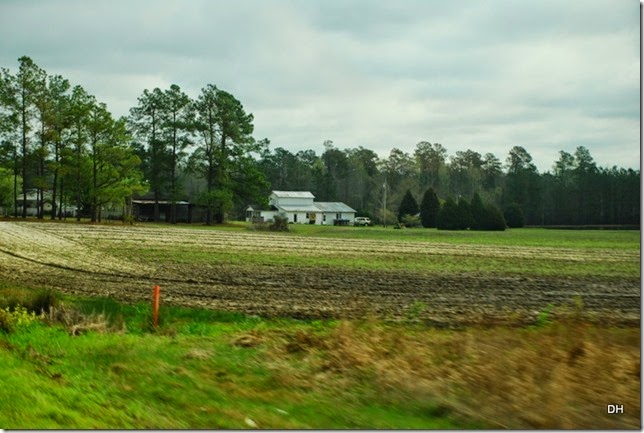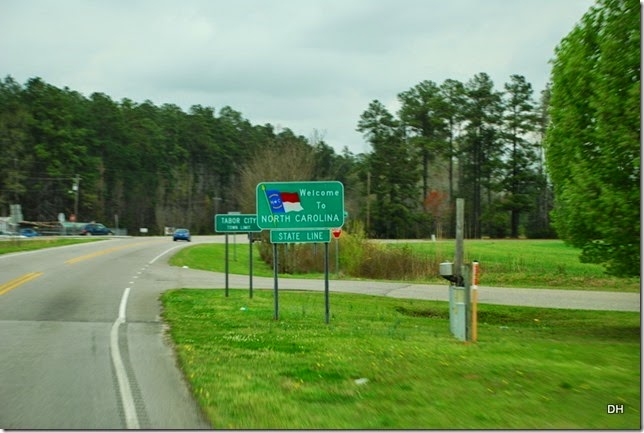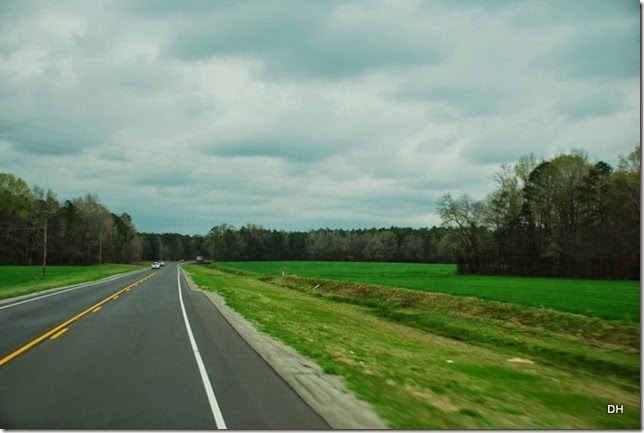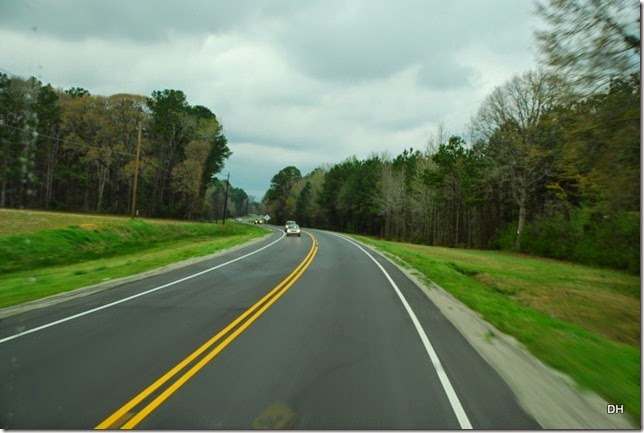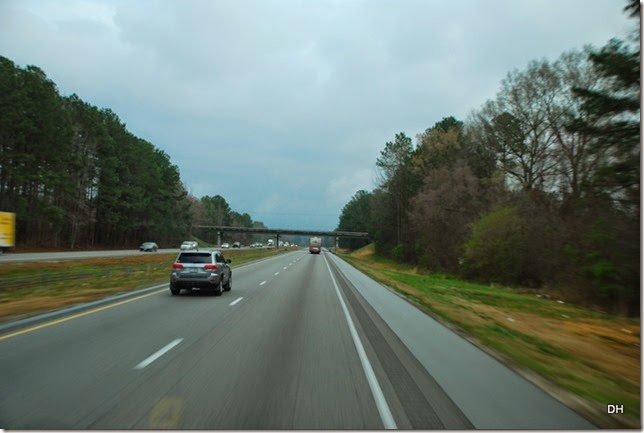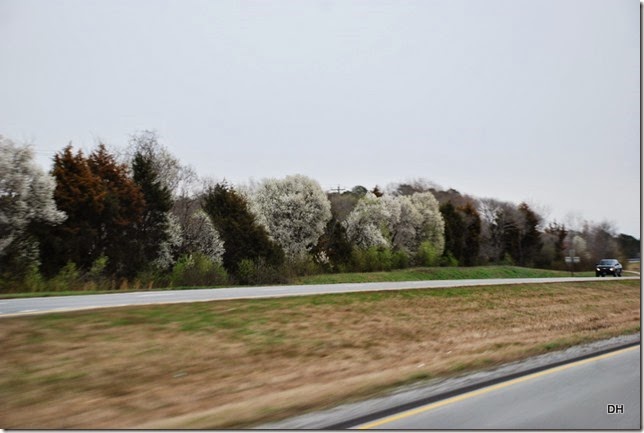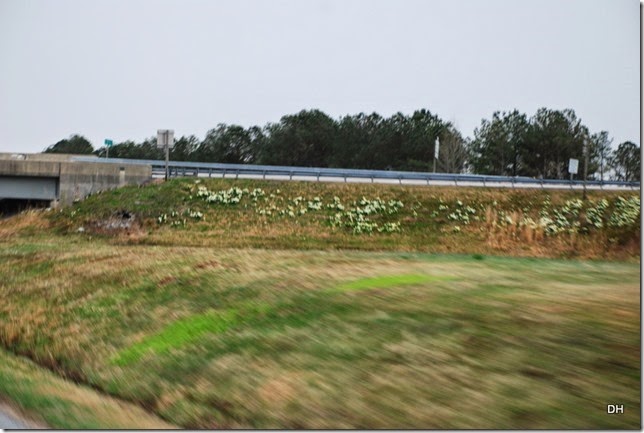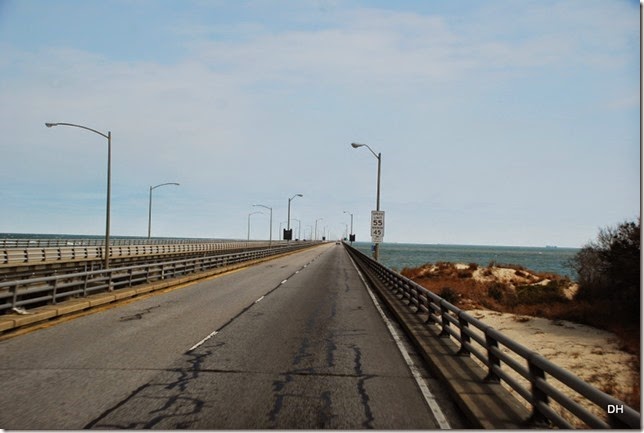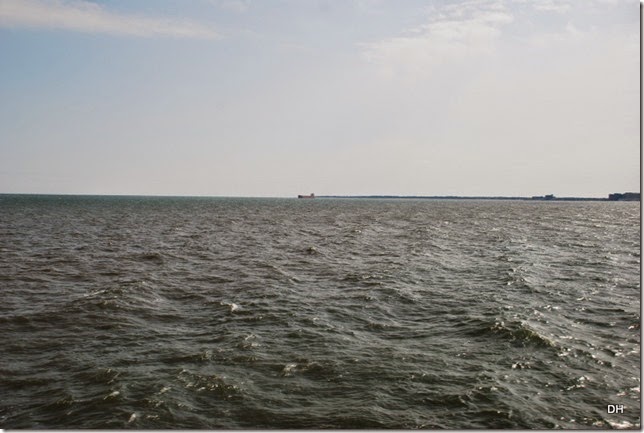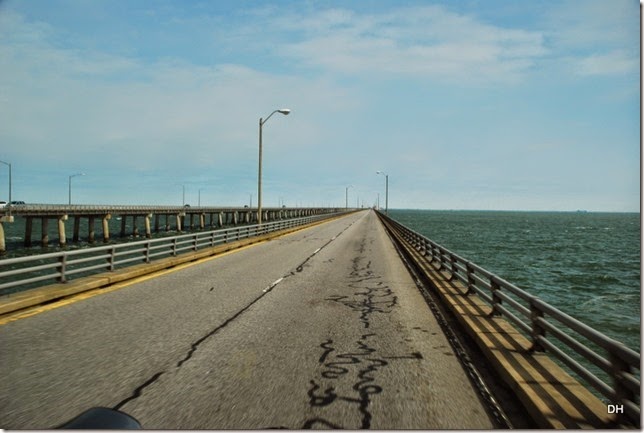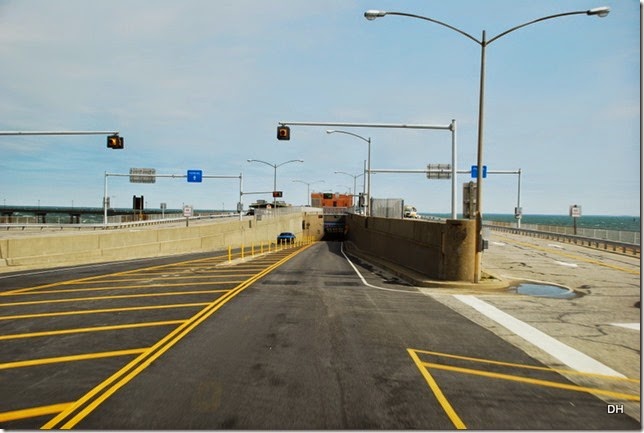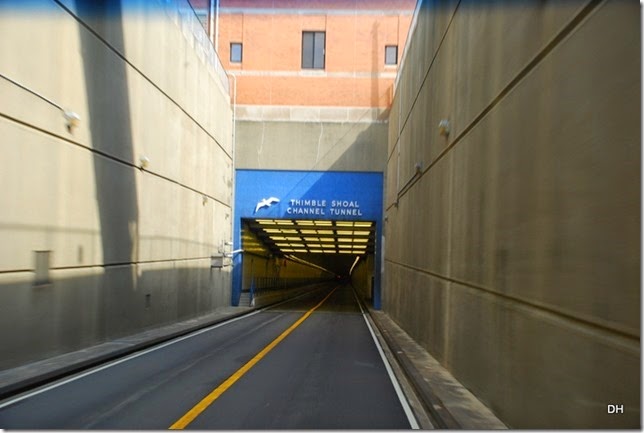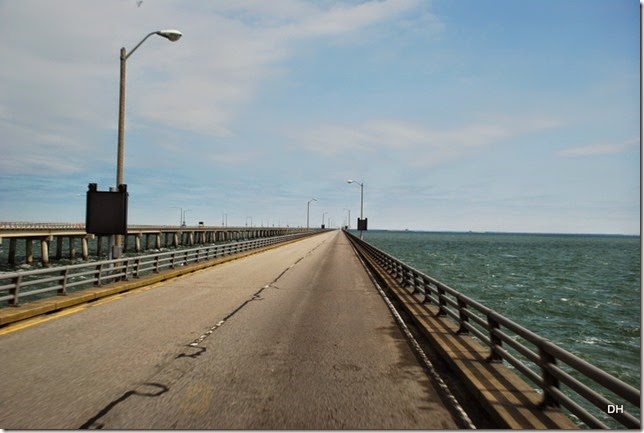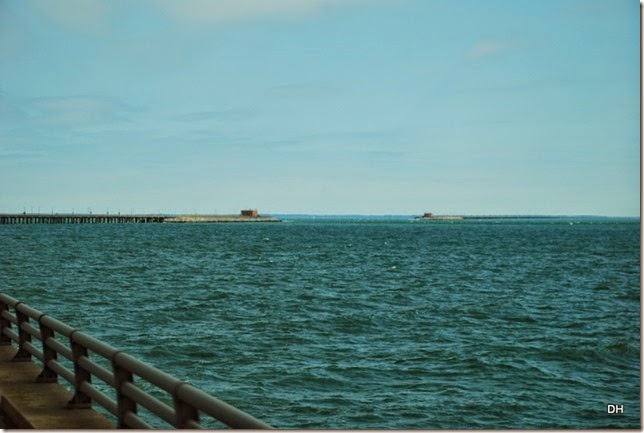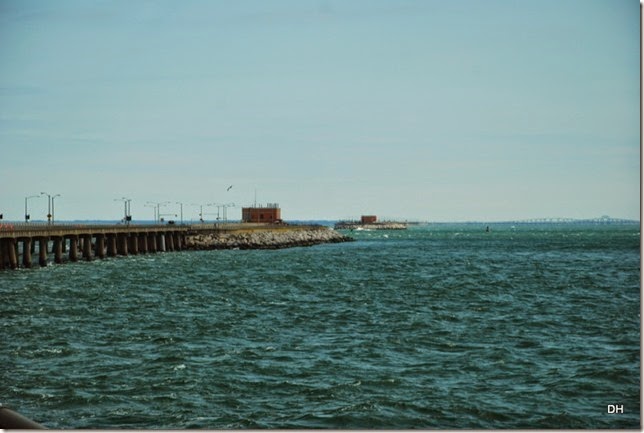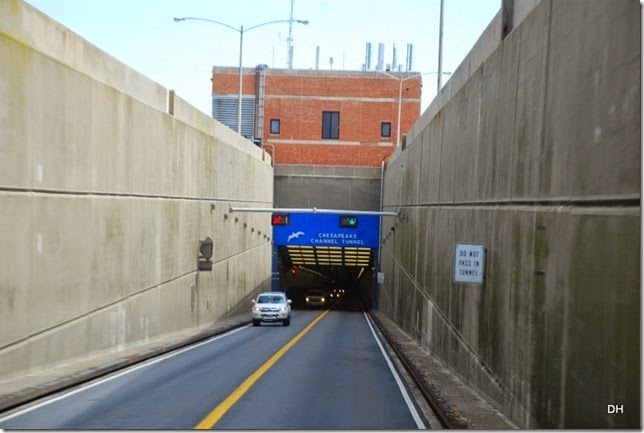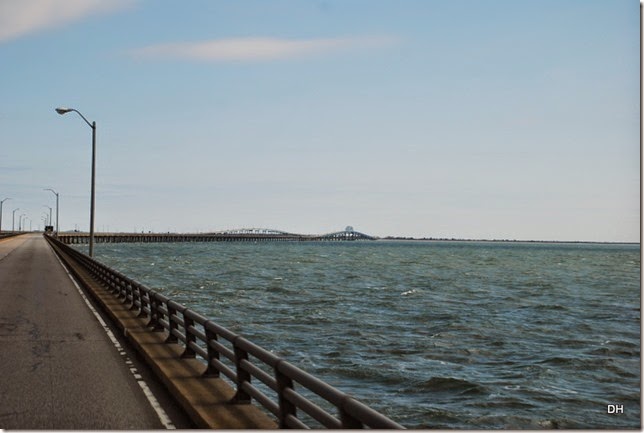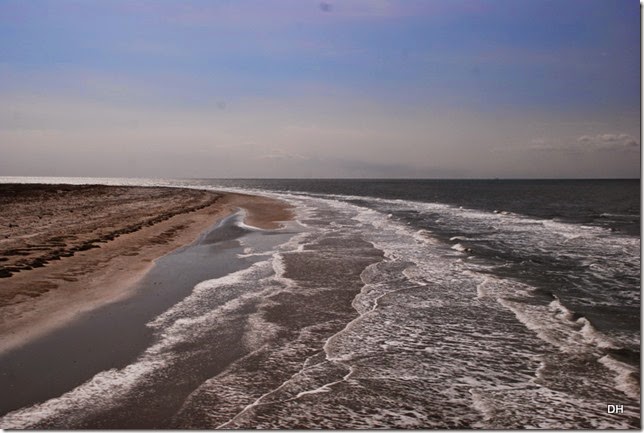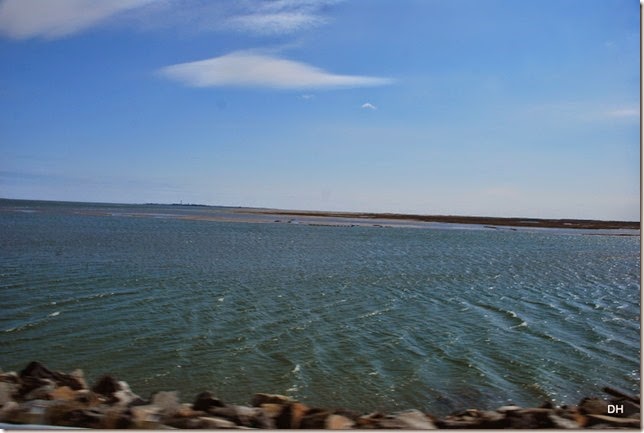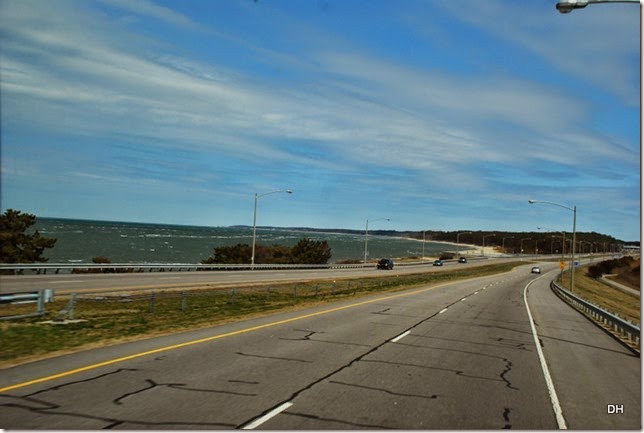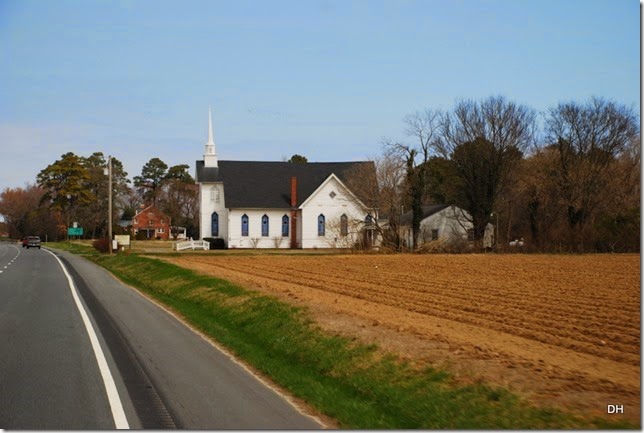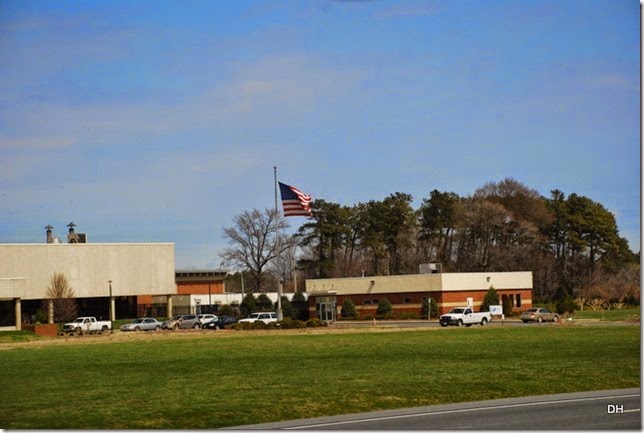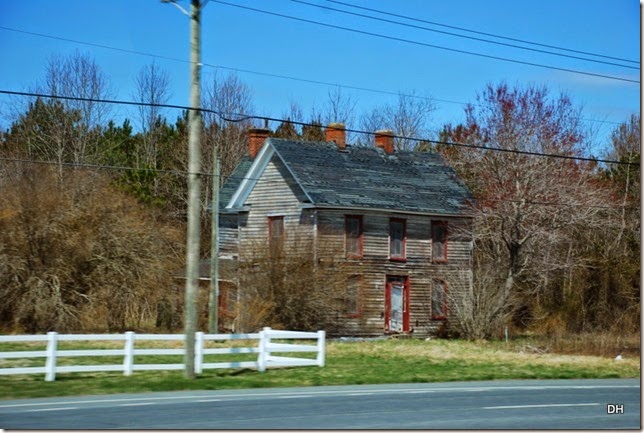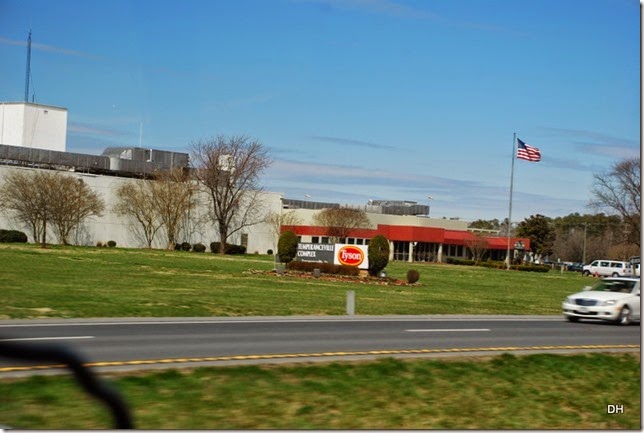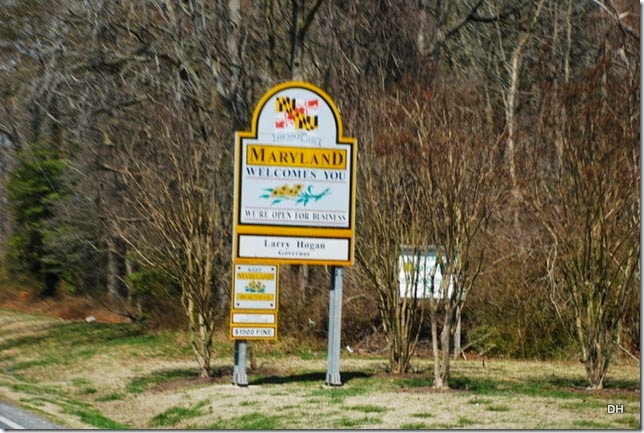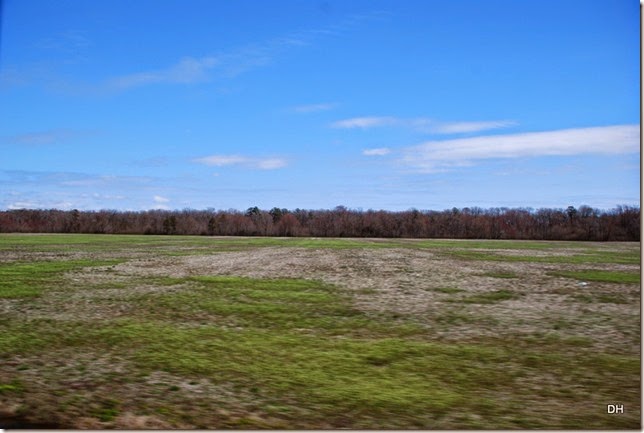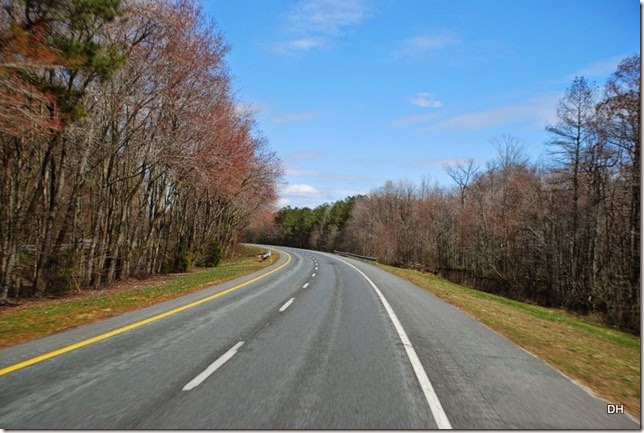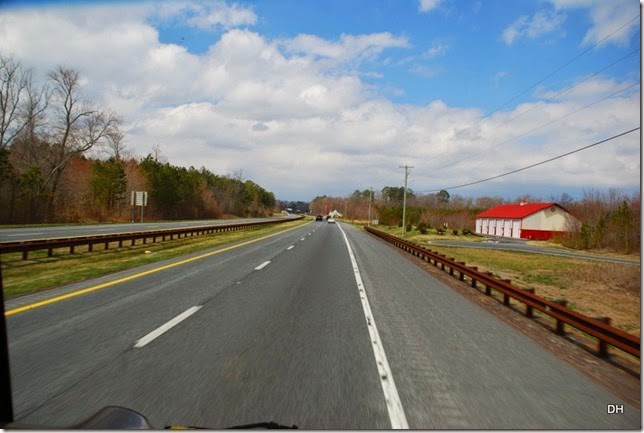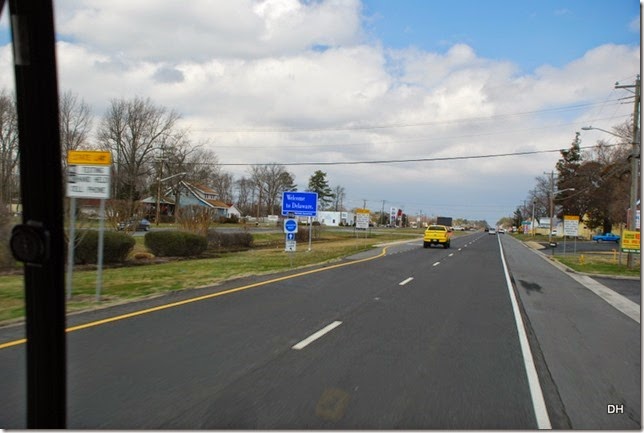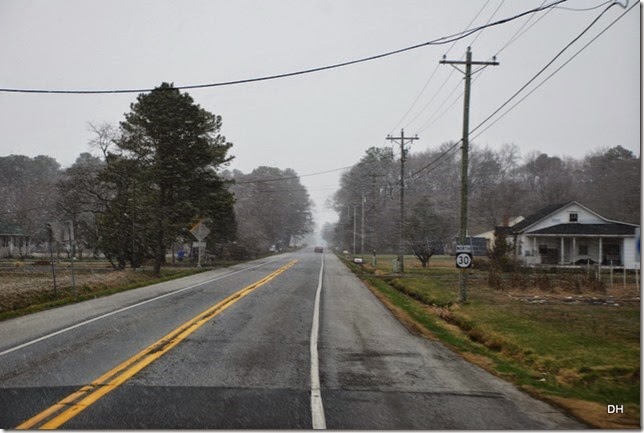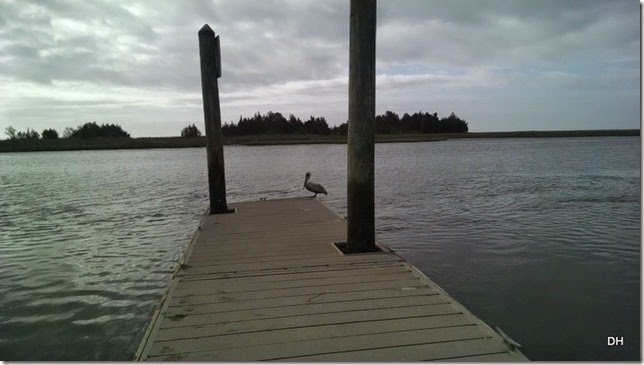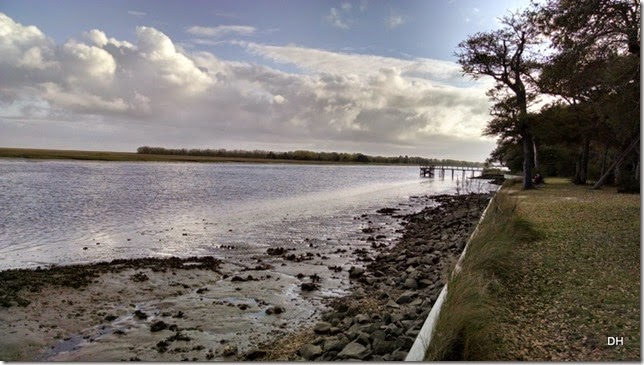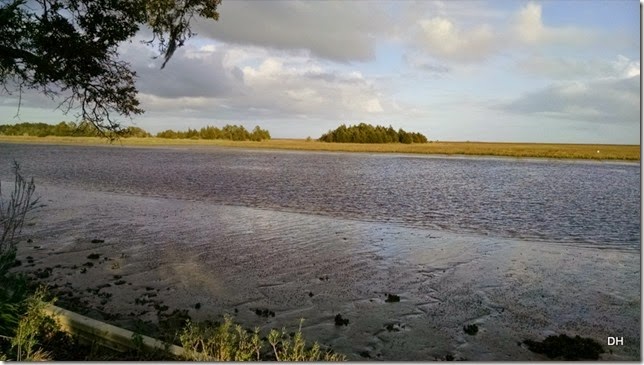Today our journey took us to Fort Sumter outside of Charleston. This fort is where America’s deadliest war, the Civil War, started.
First some information (yes, I copied it from the NPS website):
“Fort Sumter and the Coming of the Civil War
On December 20, 1860, South Carolina delegates to a special secession convention voted unanimously to secede from the Federal Union. In November, Abraham Lincoln had been elected President of the United States with no support from southern states. The critical significance of this election was expressed in South Carolina’s Declaration of the Immediate Causes [of] Secession: “A geographical line has been drawn across the Union, and all the States north of that line have united in the election of a man to the high office of President of the United States, whose opinions and purposes are hostile to slavery.” The Declaration claimed that secession was justified because the Federal Government had violated the Constitutional compact by encroaching upon the rights of the sovereign states. As the primary violation, the Declaration listed the failure of 14 northern states to enforce the Federal Fugitive Slave Act or to restrict the actions of antislavery organizations. “Thus the constituted compact [the U.S. Constitution] has been deliberately broken and disregarded by the non-slaveholding States, and the consequence follows that South Carolina is released from her obligation.” The Declaration expressed South Carolina’s fear that “The slaveholding States will no longer have the power of self-government, or self-protection, and the Federal Government will have become their enemy.”
The South Carolina Declaration shows how national arguments related to state sovereignty arose from questions about the nature and expansion of slavery. Competing interests were evident at the Constitutional Convention of 1787 when the Founding Fathers were unable to effectively deal with the national problem of slavery. Unable to resolve the issue, it was put off for future generations. The lack of either a clear Constitutional recognition of chattel slavery or a provision for leaving the Union meant that both issues would be passionately debated. In the early years of the republic slavery became more entrenched and vital to the southern economy even as it was slowly dying out in the northern states.
As the country expanded, regional conflict centered on the extension of slavery into new American territories. Included in the arguments was the fate of enslaved African Americans fleeing from the South. Over decades, North and South tried and failed to reach agreements on geographic boundaries for slavery, the recapture of runaways, and the status of free blacks living throughout the nation. National political parties, religious denominations, and even families divided over these issues. In the months between Lincoln’s election and his inauguration, as Lower South states proclaimed secession, efforts at compromise continued. Southern Unionists and their northern supporters believed that the Union could be restored without war if only the southern states had guarantees that the Federal Government would not interfere with their slave property. A Constitutional amendment guaranteeing the rights of slave owners was suggested, but Lincoln concluded that no plan of compromise would ever fully satisfy South Carolina, the state that led the South in defense of the rights of slaveholders and the right of secession.
Within six weeks after South Carolina’s secession, five other states— Mississippi, Florida, Alabama, Georgia, and Louisiana—followed its example. Early in February 1861, delegates met in Montgomery, Ala., adopted a constitution, set up a provisional government—the Confederate States of America—and elected Jefferson Davis as their president. By March 2, when Texas officially joined the Confederacy, nearly all the Federal forts and navy yards in the seven seceding states had been seized by the new government. Fort Sumter was one of the few that remained in Federal hands.
When South Carolina seceded, there were four Federal installations around Charleston Harbor: Fort Moultrie on Sullivans Island, Castle Pinckney on Shute’s Folly Island near the city, Fort Johnson on James Island across from Moultrie, and Fort Sumter at the harbor entrance. The only post garrisoned by more than a nominal number of soldiers was Fort Moultrie, where Maj. Robert Anderson commanded two companies, 85 men, of the First U.S. Artillery. Six days after South Carolina seceded, Anderson concluded that Moultrie was indefensible and secretly transferred his command to Fort Sumter, a mile away. On December 27 South Carolina volunteers occupied Forts Moultrie and Johnson and Castle Pinckney, and began erecting batteries elsewhere around the harbor. The state regarded Anderson’s move as a breach of faith and demanded that the U.S. Government evacuate Charleston Harbor. President James Buchanan refused and in January attempted a relief expedition. South Carolina shore batteries, however, turned back the unarmed merchant vessel, Star of the West, carrying 200 men and several months’ provisions, as it tried to enter the harbor. Early in March, Brig. Gen. Pierre G. T. Beauregard took command of the Confederate troops at Charleston and pushed work on fortifying the harbor. As the weeks passed, Fort Sumter gradually became the focal point of tensions between North and South. When Abraham Lincoln assumed office as President of the United States on March 4, 1861, he vowed in a firm but conciliatory address to uphold the national authority. The Government, he said, would not assail anyone, but neither would it consent to a division of the Union. “The power confided to me will be used to hold, occupy, and possess the property and places belonging to the Government.”
By April 4 Lincoln believed that a relief expedition was feasible and ordered merchant steamers, protected by ships of war, to carry “subsistence and other supplies” to Anderson. He also notified Governor Francis W. Pickens of South Carolina that an attempt would be made to resupply the fort. After debate—and some disagreement—the Confederate secretary of war telegraphed Beauregard on April 10 that if he were certain Sumter was to be supplied by force “you will at once demand its evacuation, and if this is refused proceed, in such manner as you may determine, to reduce it.” On April 11 Beauregard demanded that Anderson surrender Sumter. Anderson refused. At 3:20 a.m., April 12, the Confederates informed Anderson that their batteries would open fire in one hour. At ten minutes past the allotted hour, Capt. George S. James, commanding Fort Johnson’s east mortar battery, ordered the firing of a signal shell. Within moments Edmund Ruffin of Virginia, firebrand and hero of the secessionist movement, touched off a gun in the ironclad battery at Cummings Point. By daybreak batteries at Forts Johnson and Moultrie, Cummings Point, and elsewhere were assailing Fort Sumter. Major Anderson withheld his fire until 7 o’clock. Though some 60 guns stood ready for action, most never got into the fight. Nine or ten casemate guns returned fire, but by noon only six remained in action. At no time during the battle did the guns of Fort Sumter greatly damage Confederate positions. The cannonade continued throughout the night. The next morning a hot shot from Fort Moultrie set fire to the officers’ quarters. In early afternoon the flagstaff was shot away. About 2 p.m., Anderson agreed to a truce. That evening he surrendered his garrison. Miraculously, no one on either side had been killed during the engagement. Only five Federal soldiers suffered injuries. On Sunday, April 14, Major Anderson and his garrison marched out of the fort and boarded ship for transport to New York. They had defended Sumter for 34 hours, until “the quarters were entirely burned, the main gates destroyed by fire, the gorge walls seriously injured, the magazines surrounded by flames.” Civil war, so long dreaded, had begun.
Confederate Stronghold, 1863-1865
With Fort Sumter in Confederate hands, the port of Charleston became an irritating loophole in the Federal naval blockade of the Atlantic coast. In two months of 1863, 21 Confederate vessels cleared Charleston Harbor and 15 entered. Into Charleston came needed war supplies; out went cotton in payment. To close the port—and also capture the city—it was necessary first to seize Fort Sumter, now repaired and armed with some 95 guns. After an earlier Army attempt had failed on James Island, the job fell to the U.S. Navy, and Rear Adm. Samuel F. Du Pont was ordered to take the fort. On the afternoon of April 7, 1863, nine armored vessels steamed slowly into the harbor and headed for Fort Sumter. For 21⁄2 hours the ironclads dueled with Confederate batteries in the forts and around the harbor. The naval attack only scarred and battered Sumter’s walls, but the far more intense and accurate Confederate fire disabled five Federal ships, one of which, the Keokuk, sank the next morning.
When the ironclads failed, Federal strategy changed. Du Pont was removed from command and replaced by Rear Adm. John A. Dahlgren, who planned to combine land and sea operations to seize nearby Morris Island and from there to demolish Fort Sumter. At a position secured by U.S. forces on Morris Island, Union troops under Maj. Gen. Quincy A. Gillmore began to place rifled cannon powerful enough to breach Sumter’s walls.
Meanwhile, Confederate laborers and slaves inside Fort Sumter worked day and night with bales of cotton and sand to buttress the walls facing the Federal guns. The fort’s garrison at this time consisted of five companies of the First South Carolina Artillery under Col. Alfred Rhett. Federal troops fired a few experimental rounds at the fort in late July and early August. The bombardment began in earnest on August 17, with almost 1,000 shells being fired the first day alone. Within a week, the fort’s brick walls were shattered and reduced to rubble, but the garrison refused to surrender and continued to repair and strengthen the defenses. Confederate guns at Fort Moultrie and other points now took up the defense of Sumter. Another Federal assault on September 9 fell short; this time the attackers lost five boats and 124 men trying to take the fort from Maj. Stephen Elliott and fresh Confederate troops under his command. Except for one 10-day period of heavy firing, the bombardment continued intermittently until the end of December. By then, Sumter’s cannon were severely damaged and dismounted and its defenders could respond with only “harmless musketry.”
In the summer of 1864, after Maj. Gen. John G. Foster replaced Gillmore as commander of land operations, the Federals made one last attempt to take Sumter. Foster, a member of Anderson’s 1861 garrison, believed that “with proper arrangements” the fort could be taken “at any time.” A sustained two-month Union bombardment, however, failed to dislodge the 300-man Confederate garrison and Foster was ordered to send most of his remaining ammunition and several regiments of troops north to aid Grant’s overland campaign against Richmond. Desultory fire against the fort continued through January 1865. For 20 months Fort Sumter had withstood Federal siege and bombardment, and it no longer resembled a fort at all. But defensively it was stronger than ever. Big Federal guns had hurled seven million pounds of metal at it, yet the Confederate losses during this period had been only 52 killed and 267 wounded. Gen. William T. Sherman’s troops advancing north from Savannah, however, caused the Confederate troops to be withdrawn, and Fort Sumter was evacuated on February 17, 1865.”
------------
We boarded our tour boat around 10:30 and headed to the Fort past the Yorktown:
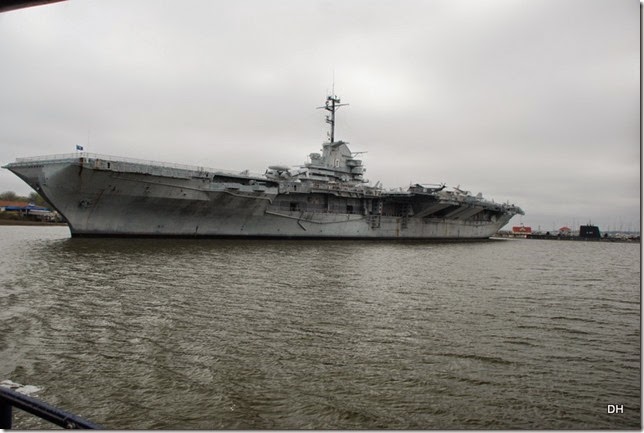
Into the main shipping channel:
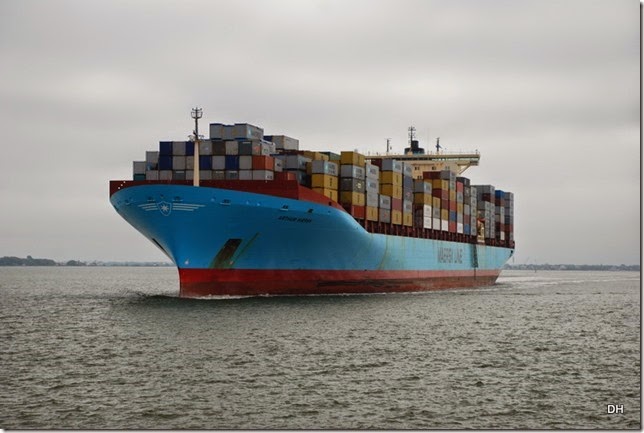
Heading to the fort:
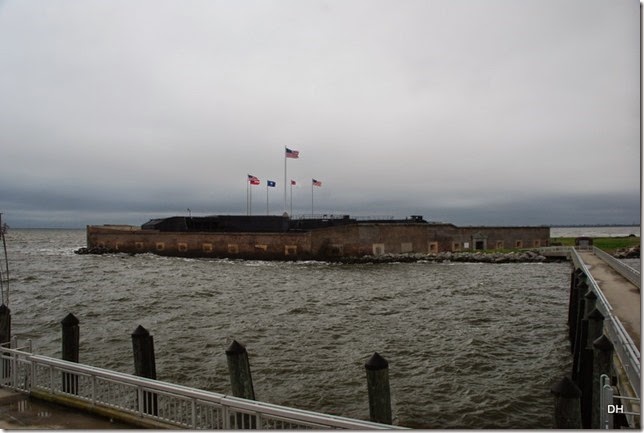
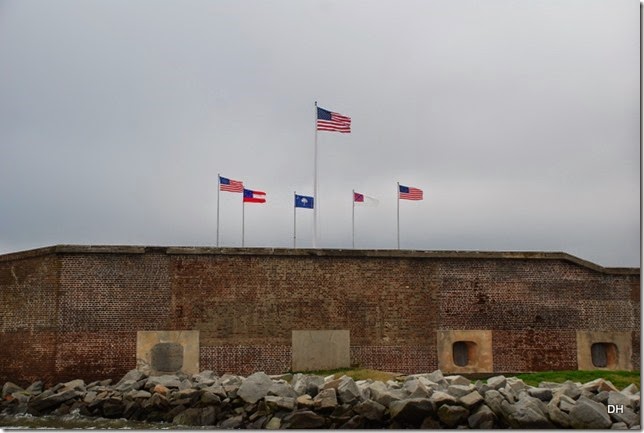
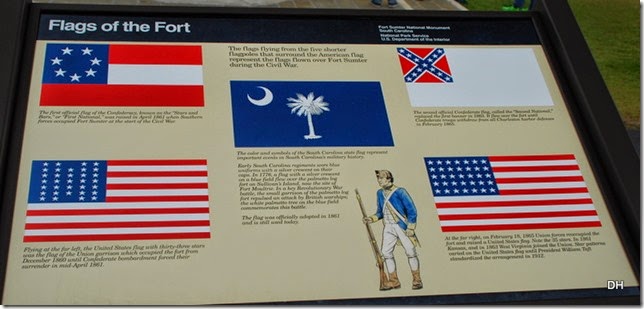
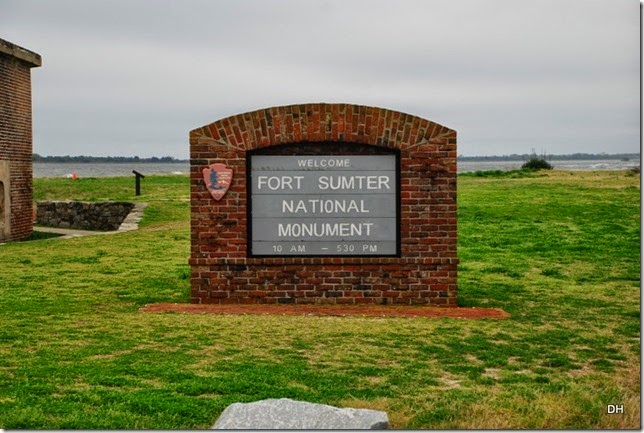
We entered thru the Sally Port.
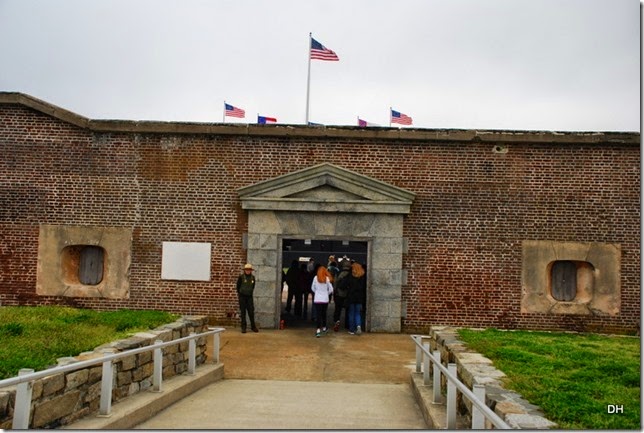
Our first stop was to hear the ranger talk about the history of the fort and what we will see. He was very entertaining:
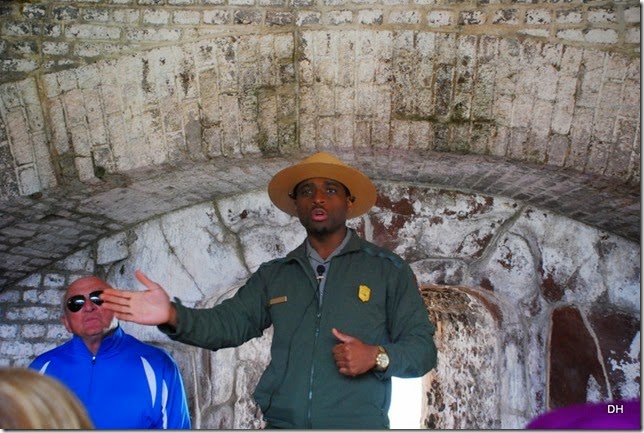
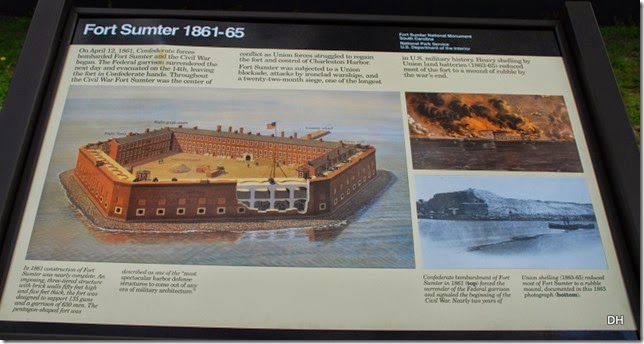
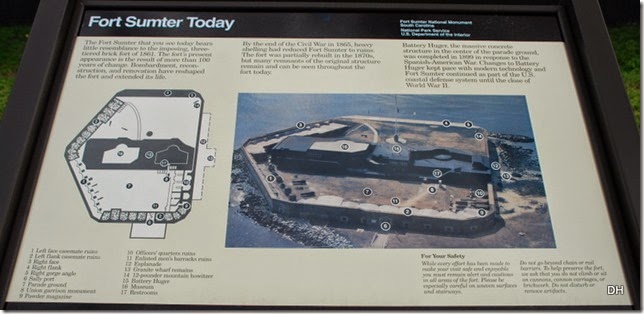
This is left flank casemates (gunrooms). This first tier was surmounted by a second tier similar in appearance but considerable taller. This pattern was also followed on the fort’s right flank and on its right and left faces:
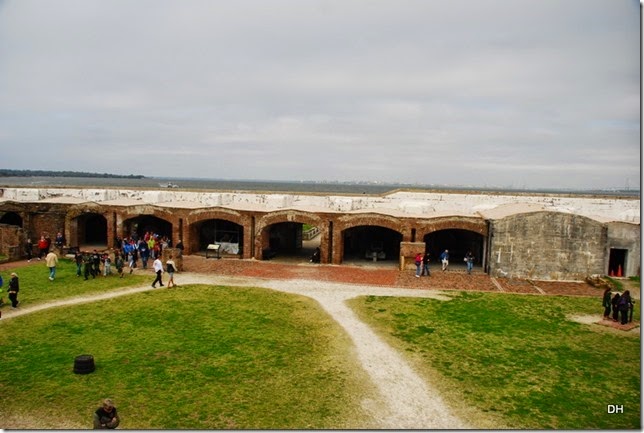
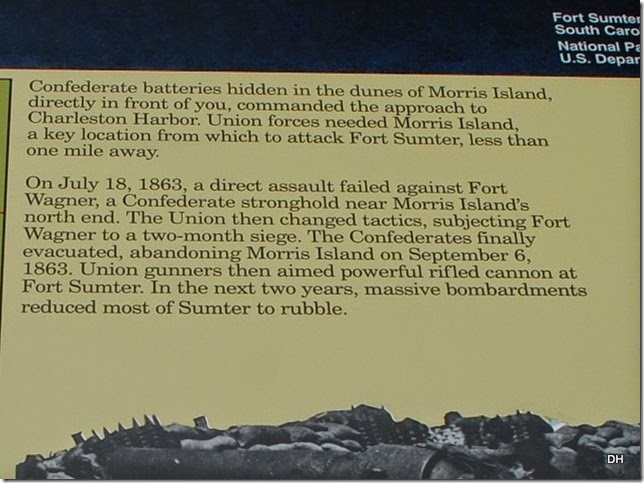
Morris Island in the background:
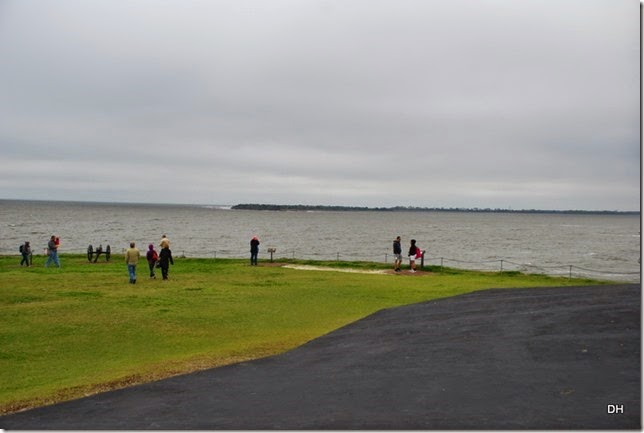
This is the right face area:
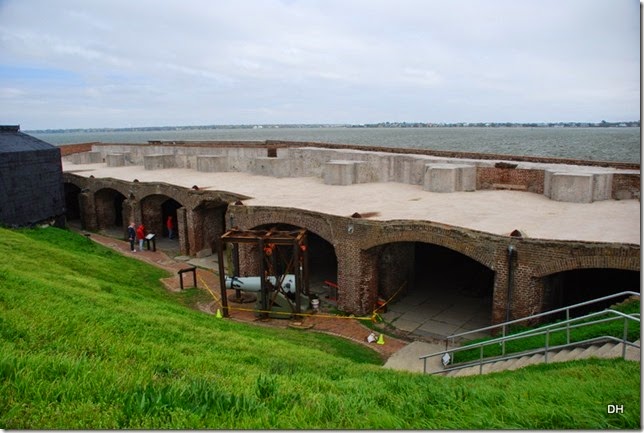
Union forces on Morris Island fired these 11 100 pounder Parrott guns against Fort Sumter. The Army moved them to the fort in the 1870’s.
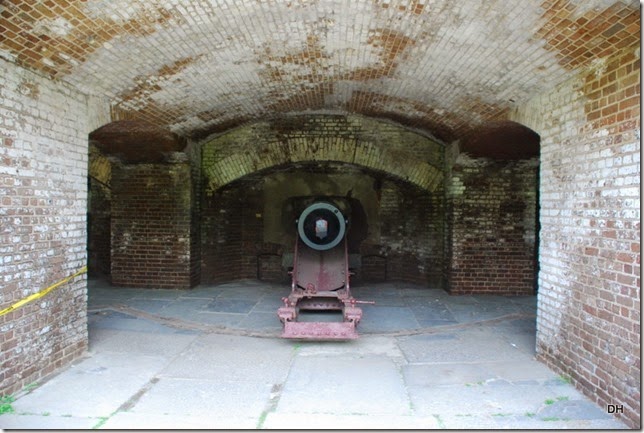
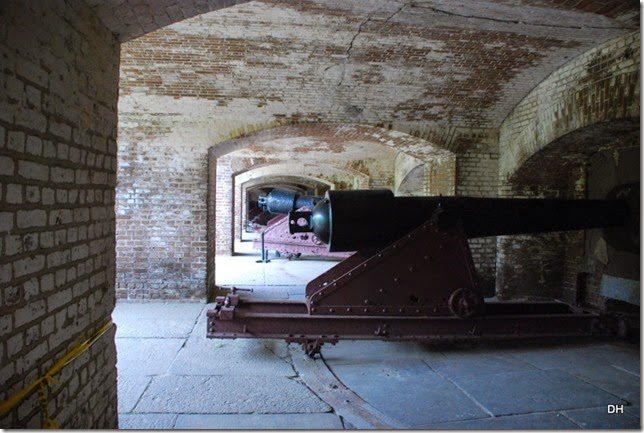
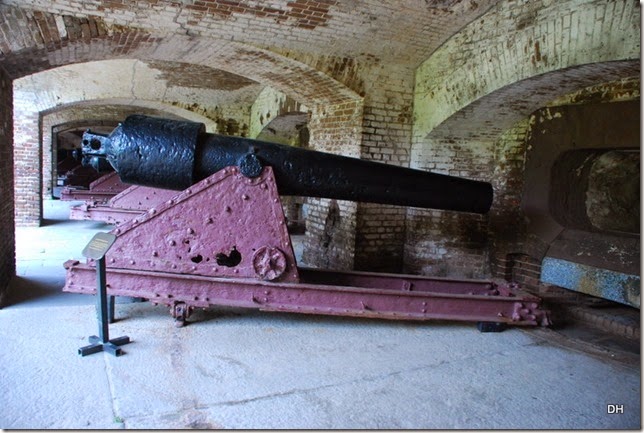
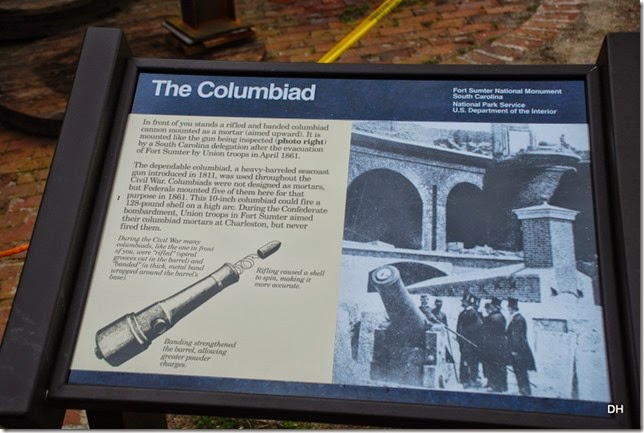
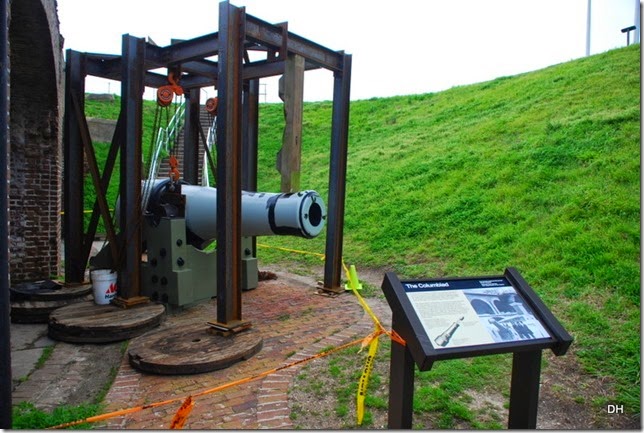
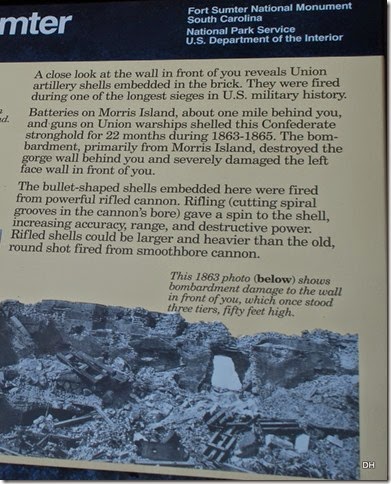
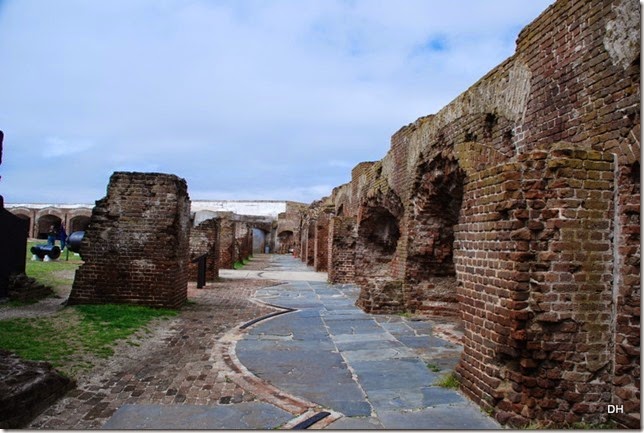
The above is the left face casemate ruins. Can you imagine what the sound must have been like to have all these guns going off – oh my!!
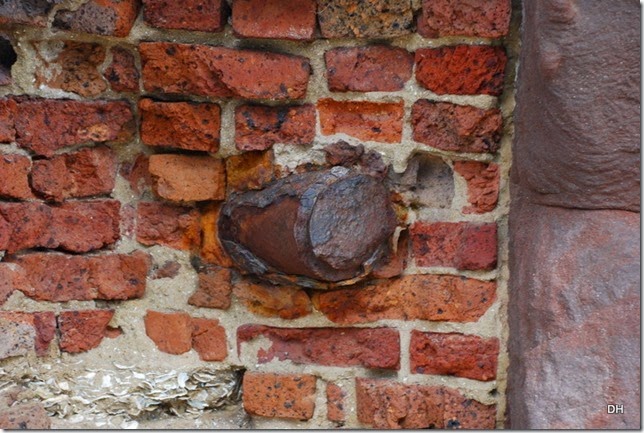
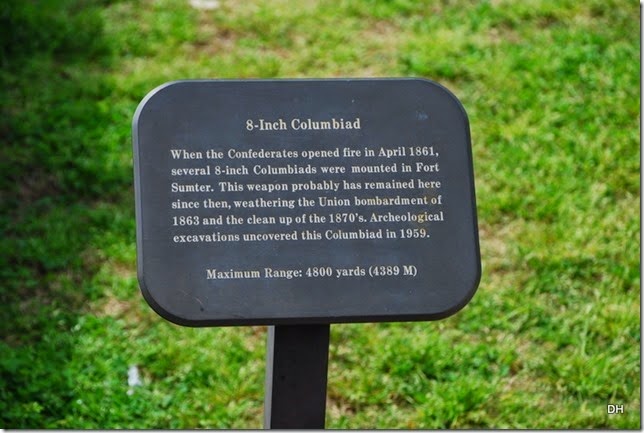
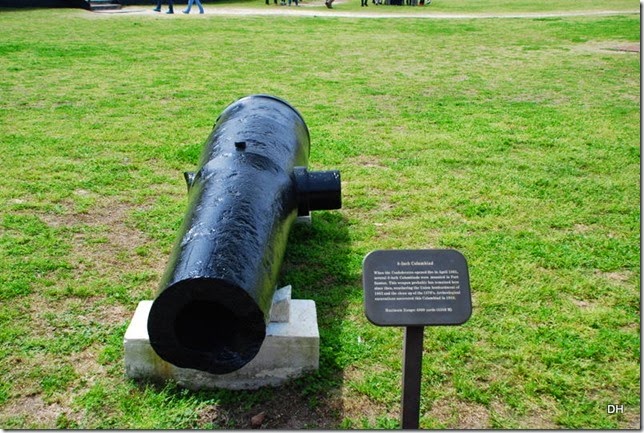
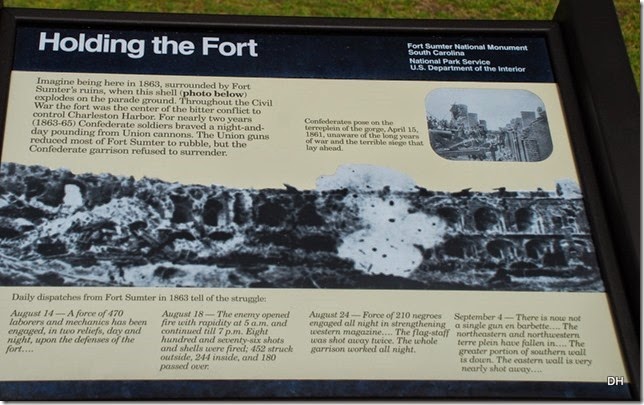
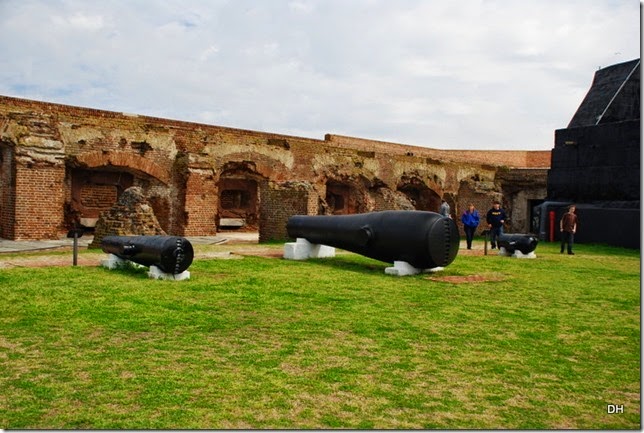
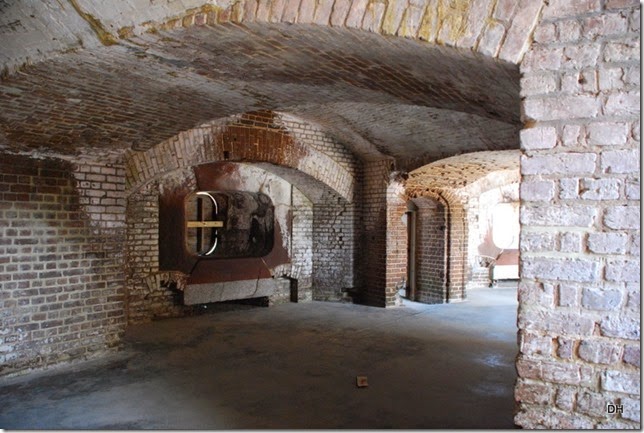
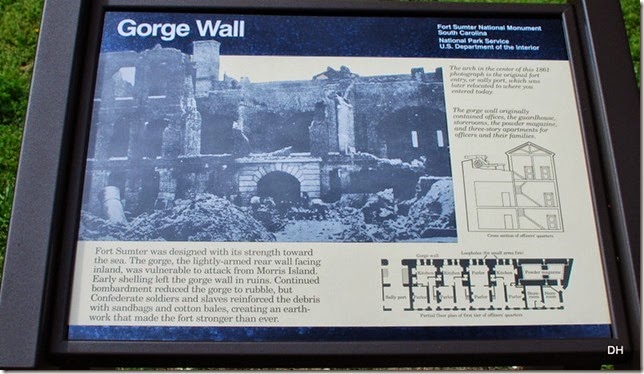
Here is the gorge wall and the Officers’ Quarters Ruins. Three stories high, this building extended the entire length of the gorge. In it were offices, storerooms, a guardhouse, and powder magazines. For an unknown reason, the powder magazine in this corner of the barracks exploded on December 11, 1863, killing 11 and wounding 41 Confederates. The explosion also tilted the arch over the entrance to the magazine.
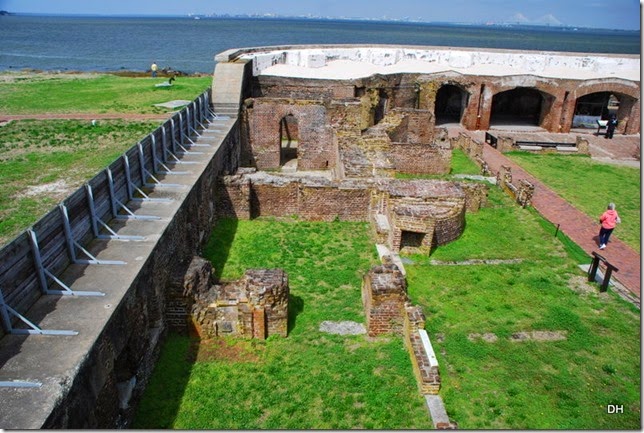
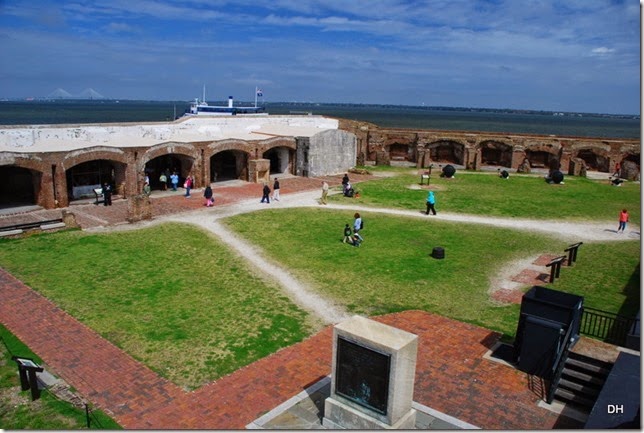
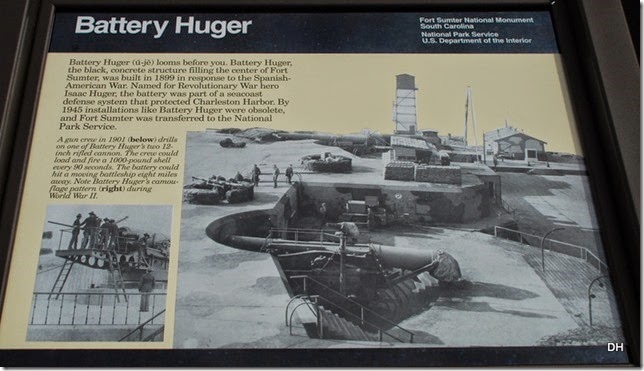
On one of the overlooks, we watched two dolphins frolicking in the water:

What an awesome place. We were only allowed an hour at the fort and we could have spent more than double that – Bummer. We did not get to see the museum and many of the items near the fort’s perimeter. Maybe another time.
A view of Charleston on our way back to the harbor.

The Charleston area has so much history – we could spend days just visiting all the places. If you are in this area, I highly recommend seeing the fort.
On our way back, we bought firewood. We had steaks over the fire – YUM! and later on our neighbors joined us – another good day.
Stay tuned and enjoy today.

